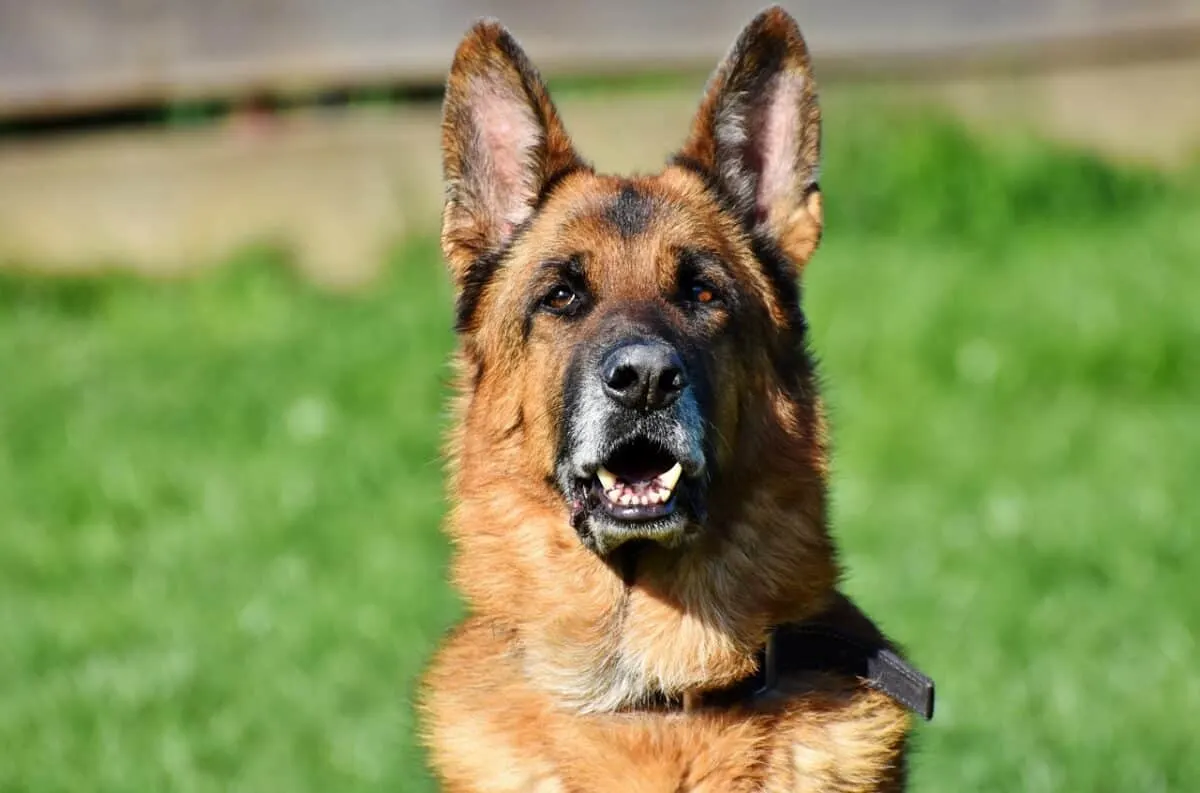The German Shepherd is renowned for its wolfish good looks, ferocity, loyalty, and noble demeanor. German Shepherds may have been initially developed as working dogs to herd sheep and guard flocks, but they have expanded their roles considerably.
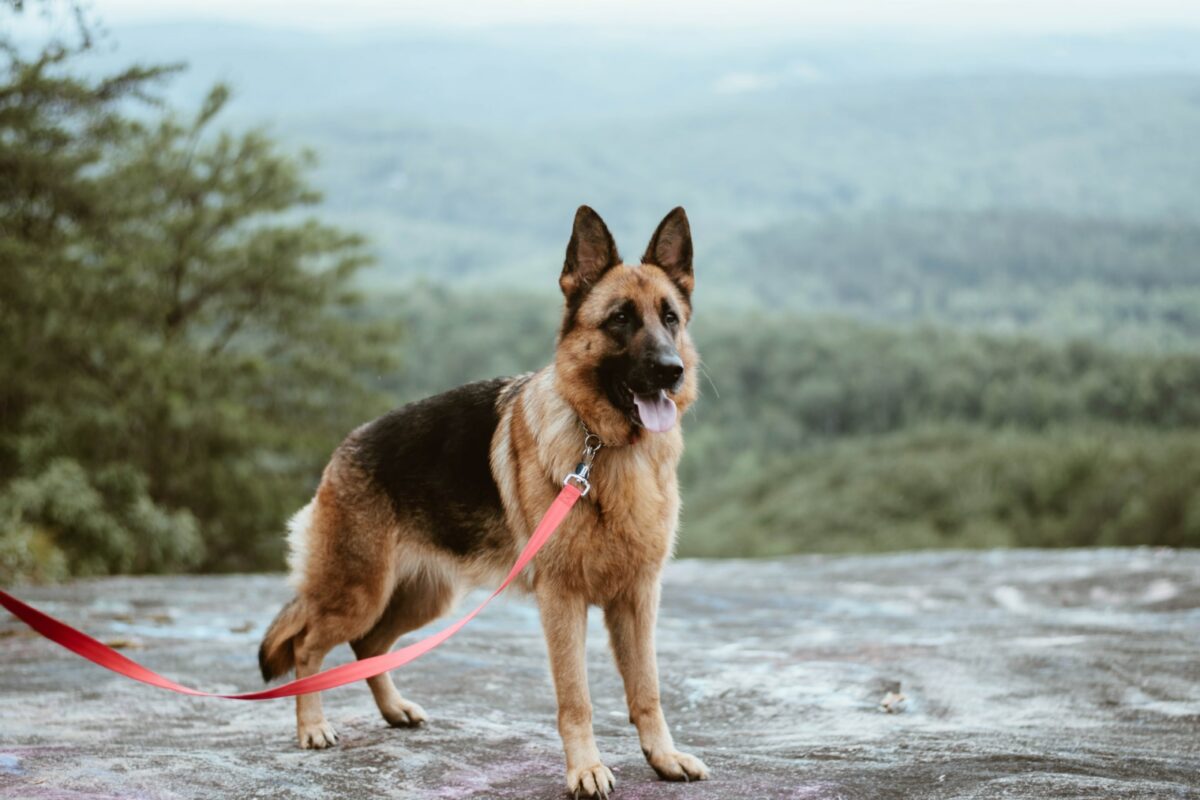
You might be pleasantly surprised to find out how friendly these dogs are. Although they are often associated with law enforcement, you can also find them joining their owners on exciting trips, participating in obedience training, and having fun in the backyard.
Fast Facts About the German Shepherd

- Breeding: Guard and Herding
- Origin: Germany
- Life span: 7-10 years
- Height: 22–26 inches
- Weight: 75–95 pounds
Appearance
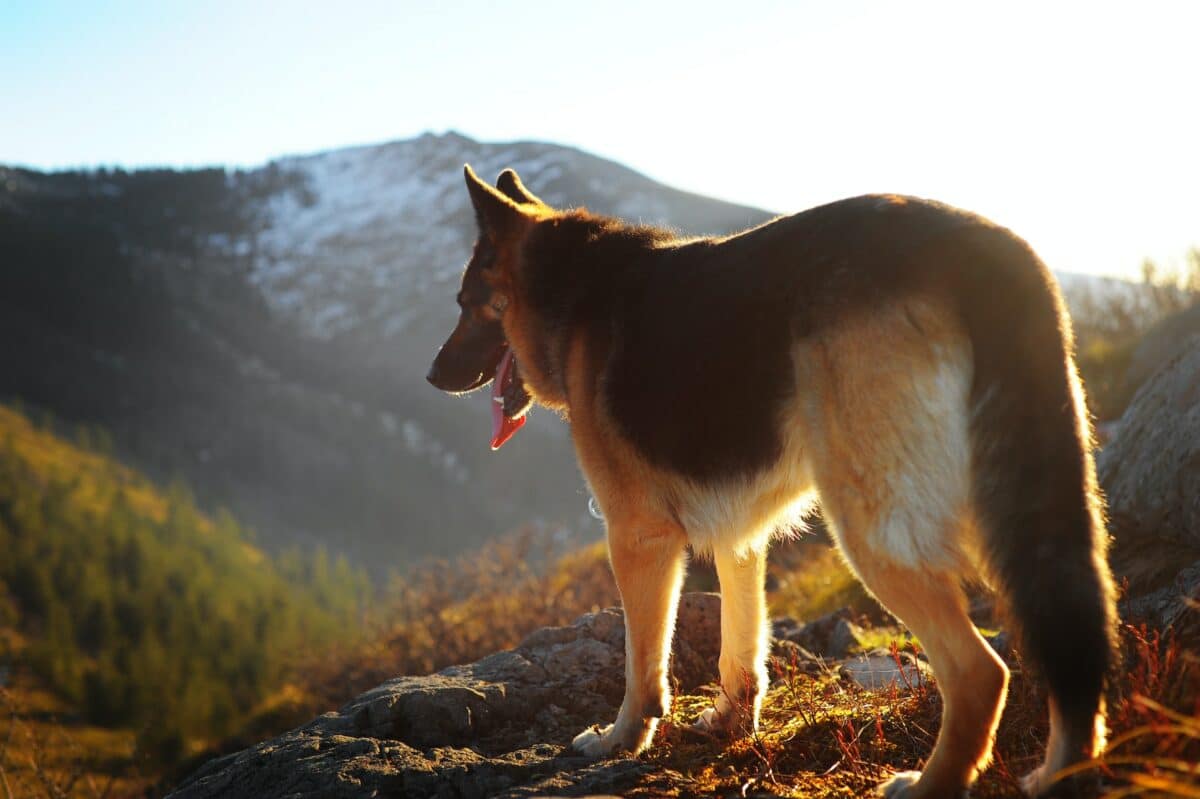
German Shepherds are gorgeous canines with distinctive square noses, bushy tails, and typically black masks. They are big and powerful. Their typical coloration is tan/black or red/black, and their backs frequently have “saddle” and “blanket” marks. Sable, silver, liver, and panda are more uncommon colorings.
The usual double coat of a German shepherd is robust, with a thick underlay and a water-resistant outer layer. They are unquestionably shedders. The average dog sheds once or twice a year, but these canines will benefit greatly from weekly grooming.
While most of them have a medium or long coat, others have no undercoat, which necessitates specialized care requirements. Learn how to maintain your specific dog’s coat correctly; this will make the most of the natural advantages of their hair and reduce excessive shedding.
Habitat and Distribution
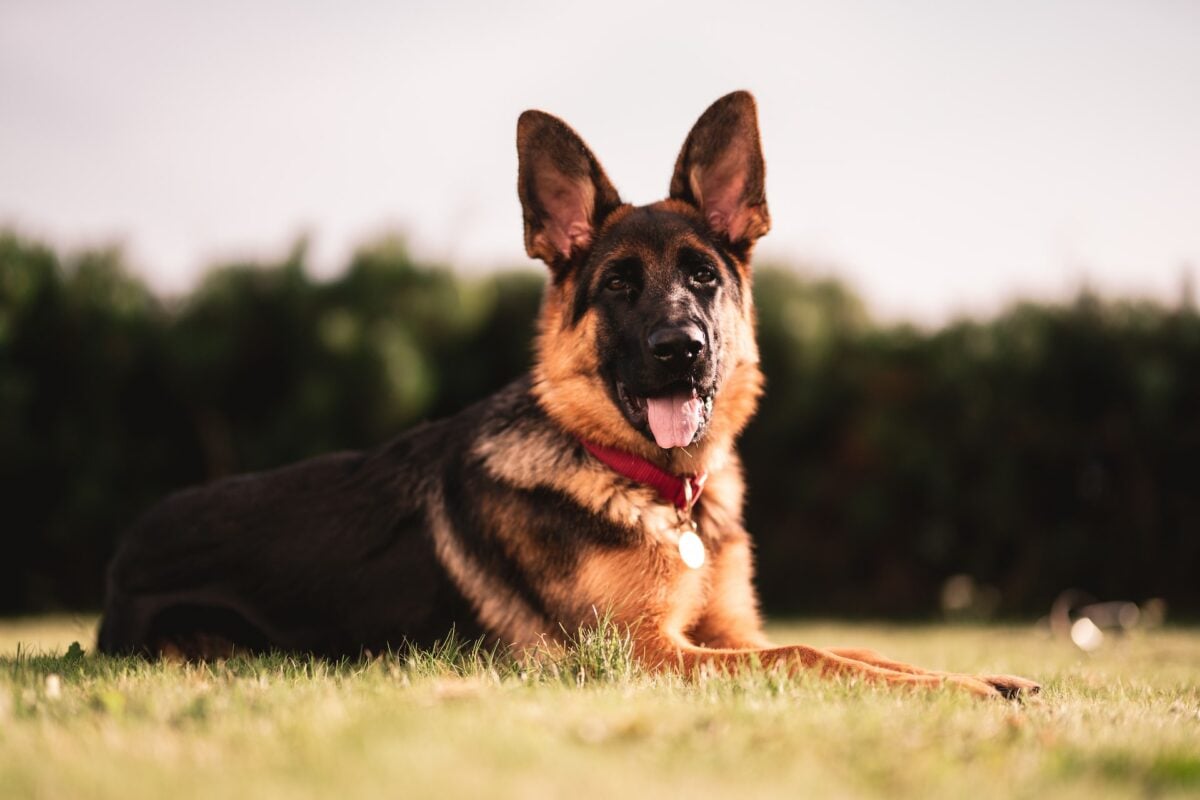
Since it is a domesticated breed, it doesn’t have a natural habitat because it was bred to fulfill the duties of a herding dog, guard dog, and companion after it was first domesticated.
In 1899, Captain Max von Stephanitz was responsible for the German Shepherd’s first appearance in Germany due to his breeding efforts. Captain von Stephanits set out to breed the ultimate herding dog. It is a versatile dog that has done well in various settings. It functions as a police dog, a narcotics sniffing dog, a search and rescue dog, and a service dog.
The German Shepherd has consistently ranked among the most popular dog breeds in the United States. This dog is an ideal pet for a busy household. It’s a good guard dog but needs proper socialization from a young age to avoid developing negative characteristics like hostility toward strangers.
Diet
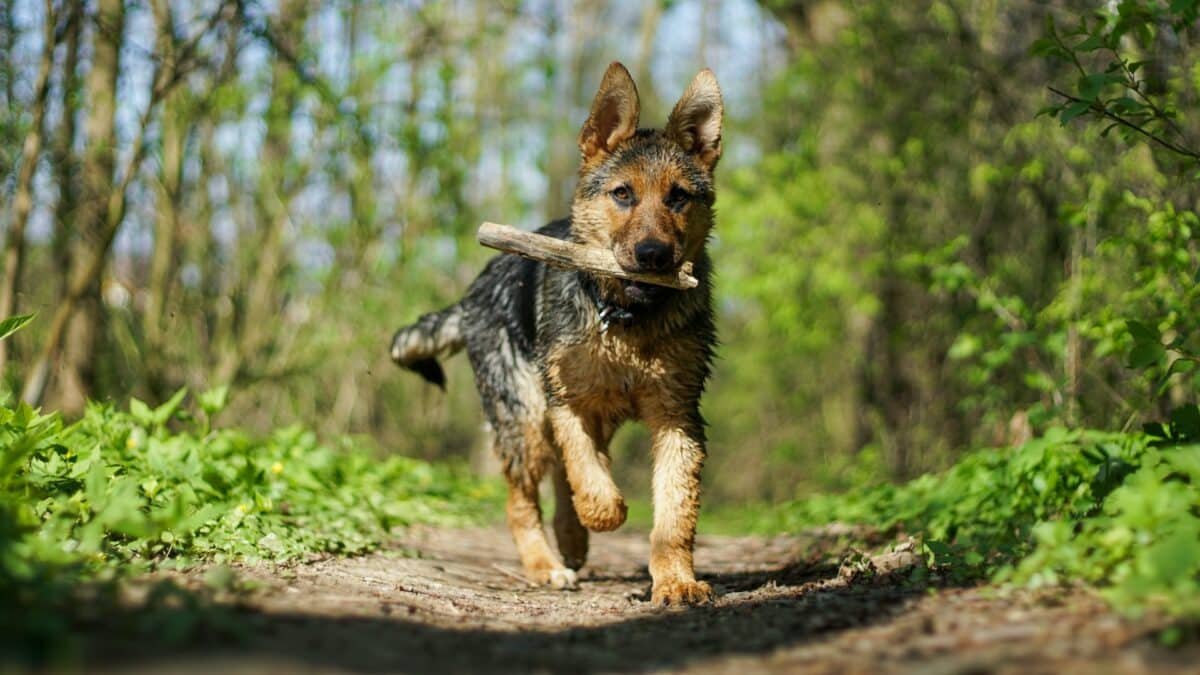
As with people, a dog’s health and activity habits align with its diet. German shepherds are huge, muscular dogs with a heightened risk of digestion disorders. Therefore, they do well on a high-quality, fresh diet that encourages athletic activity and is devoid of artificial substances.
Here are some things to keep in mind when deciding what to feed your German Shepherd:
Feed them twice every day. The danger of bloat is increased by feeding once a day, despite the many advantages of this feeding schedule. Rather consider a slow feeder.
While many human athletes benefit from a high-protein diet, dogs often do not require the same specialized food. There are situations where consuming too much protein might be harmful. Real, freshly prepared food is the most important part of a healthy diet since it has the ideal proportions of protein, fat, and fiber.
It is essential to understand exactly what you are feeding your German Shepherd. Dry and itchy skin and a sensitive stomach could be indicators of food allergies and sensitivities. However, this can be difficult with kibble because of additives not specified on the bag. Food allergies and intolerances are very common in canines, but many owners report improvement after only feeding their dogs fresh food.
Mating and Life Cycle
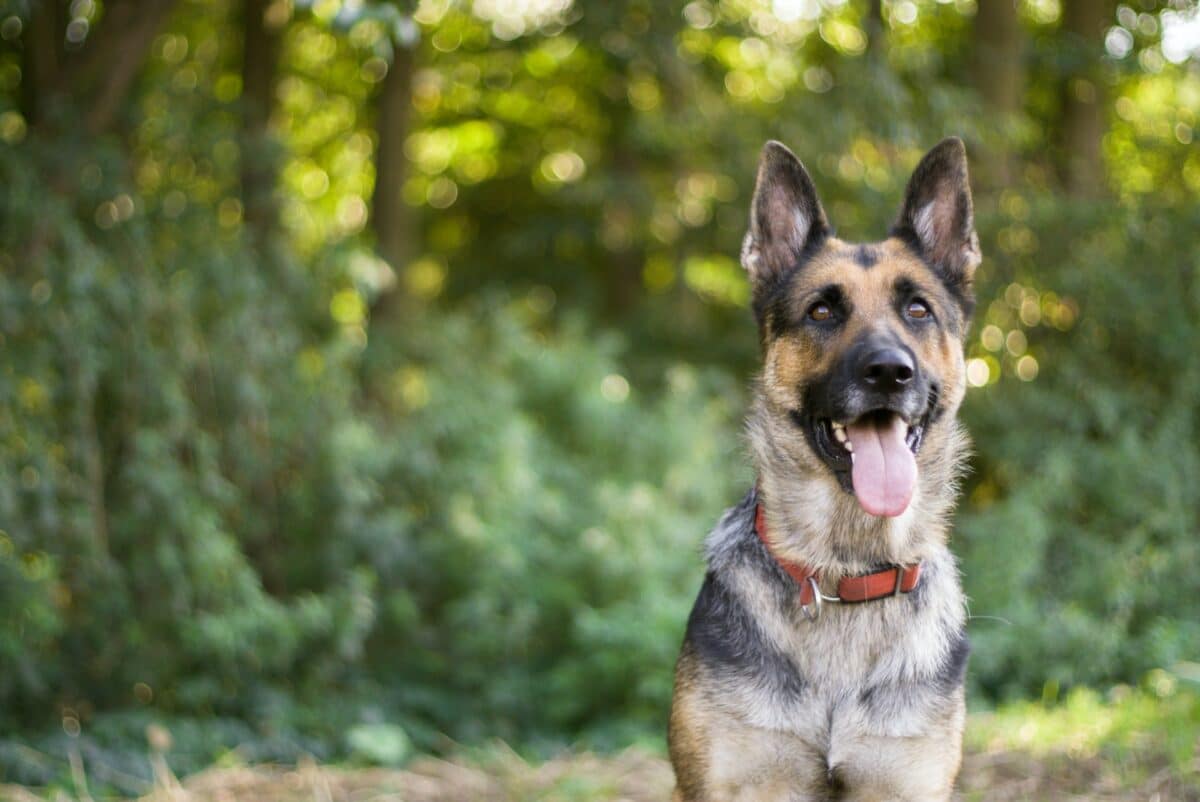
From 9 to 12 months, they will experience her first heat cycle, meaning your German Shepherd is now ready to start mating. This will trigger heat cycles for your dog every six months. There are four stages to a German Shepherd’s heat cycle; however, the heat (or estrus) phase only lasts 4-15 days at most.
In other instances, German Shepherds may enter heat later in life, sometimes as late as 8 or 24 months of age. These variations are normal and will depend on the specific dog.
Just because your dog is entering heat doesn’t mean she’s ready to start having puppies, though. Those with expertise in breeding German Shepherds state that the second or even third heat is preferable. Because of this, they can mature into their reproductive phase before mating.
A healthy pregnancy is more likely if you wait until your dog has experienced a second or third heat cycle before trying to conceive. Your dog’s physical structure will be ready for pregnancy by this point.
Temperament
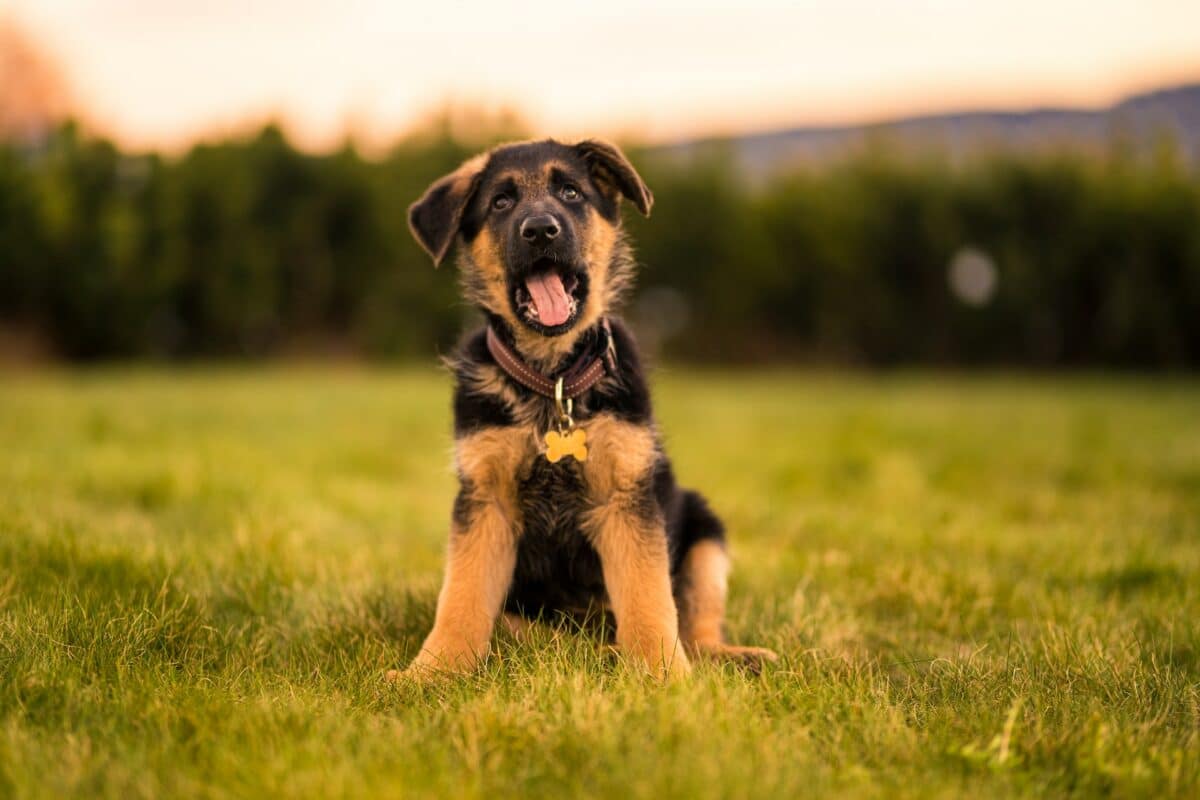
These dogs are extremely curious and thrive when they have a purpose and are given tasks to complete. This, coupled with their eagerness to please their owners, makes them the ideal working dog. Moreover, it also makes them great watchdogs. This is indicative of their high intelligence, meaning that they need not only physical stimulation such as walks, runs and games of fetch. They equally need mental stimulation through training, learning tricks and mentally stimulating toys.
However, the downside of this is that they may become a touch too overprotective over their family members. For this reason it is essential to socialize them properly from a young age, or else they may become aggressive with strangers. In fact, according to a study German Shepherds were the dog responsible for the most dog bites requiring medical attention between the 1971-2018. It’s important to note, though, that this has all to do with their upbringing. If reared in a correct and loving way, they will become great family members – as affectionate as they are loyal.
Health Concerns of German Shepherds
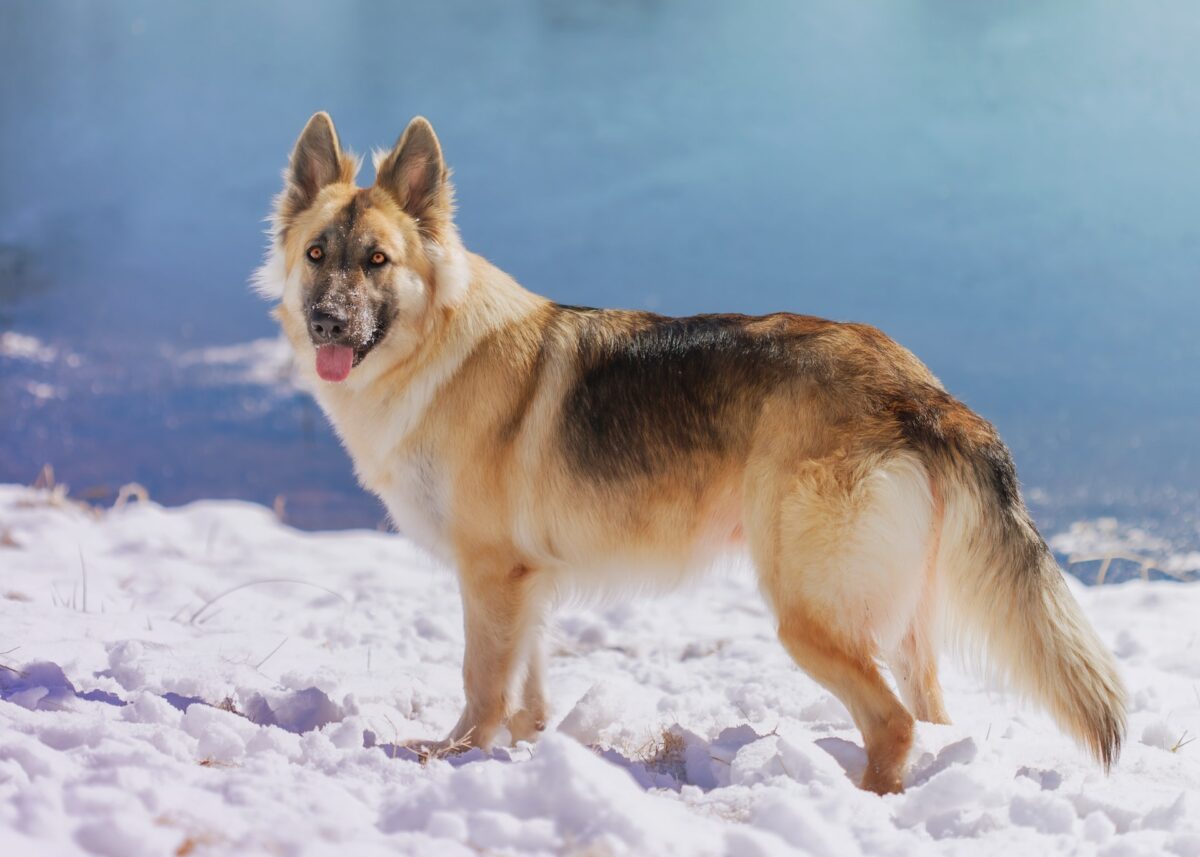
Poor Diet
German Shepherds require a balanced diet to stay healthy, yet many owners fail to provide them with the proper nutrition. This can lead to serious health issues like obesity, diabetes, and joint issues.
Lack of Exercise
German Shepherds need plenty of exercise to stay healthy. They can become overweight, suffer from joint problems, and develop behavior issues without regular exercise.
Neglect and Abuse
Neglect and abuse can seriously impact the health and well-being of German Shepherds. This can lead to a range of physical and mental health issues and an increased risk of disease and infection.
FAQs
German shepherds range in size from medium to giant. According to the American Kennel Club breed standard, male dogs must weigh between 65 and 90 pounds and between 24 and 26 inches tall when fully mature. Females weigh between 50 and 70 pounds and measure 22 and 24 inches tall when they are fully grown.
Due to their intelligence, German shepherd pups are simple to train. However, they need a lot of your time and focus because they are so intelligent. The very first day they are brought to their new home should be the beginning of training.
The amount of energy that German shepherd pups exhibit surprises some people, and some aren’t ready for the time it takes to raise one. German shepherd pups also form close relationships with their new families and struggle when left alone for extended periods.
Puppies of German shepherds should remain with their mothers for at least eight weeks. Certain breeders can keep them for up to 12 weeks. The AKC generally advises waiting until puppies are 8 to 12 weeks old before bringing them into a new home.
As puppies, dogs go through developmental phases and acquire crucial social skills. Staying with their mother for at least eight weeks is crucial for their overall physical and emotional health. Any breeder ready to release the dog before eight weeks should be avoided.
German Shepherds have a double coat, with a thick, weather-resistant outer coat and a dense, soft inner coat. The coat can be short to medium length and black, tan, and red in color.
It is recommended to groom your German Shepherd at least every two months. This includes brushing and bathing, as well as trimming their nails. Also, don’t forget that brushing their teeth should form part of their grooming routine!
Conclusion
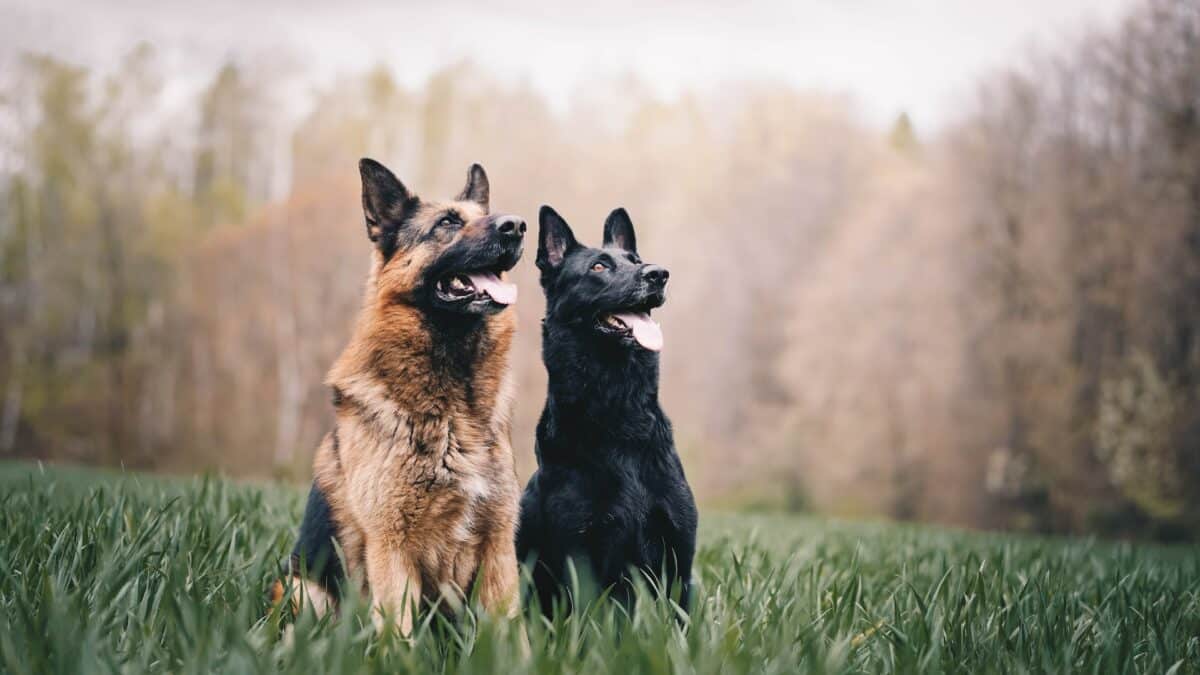
Do you want the best domestic dog for your home? German Shepherds are strong and protective if you take them through proper training.
Thank you for reading this article! Keep exploring the world of dogs with us! You’d probably also like our article on the Poodle or the French Bulldog.
Join our Forum for free today!


